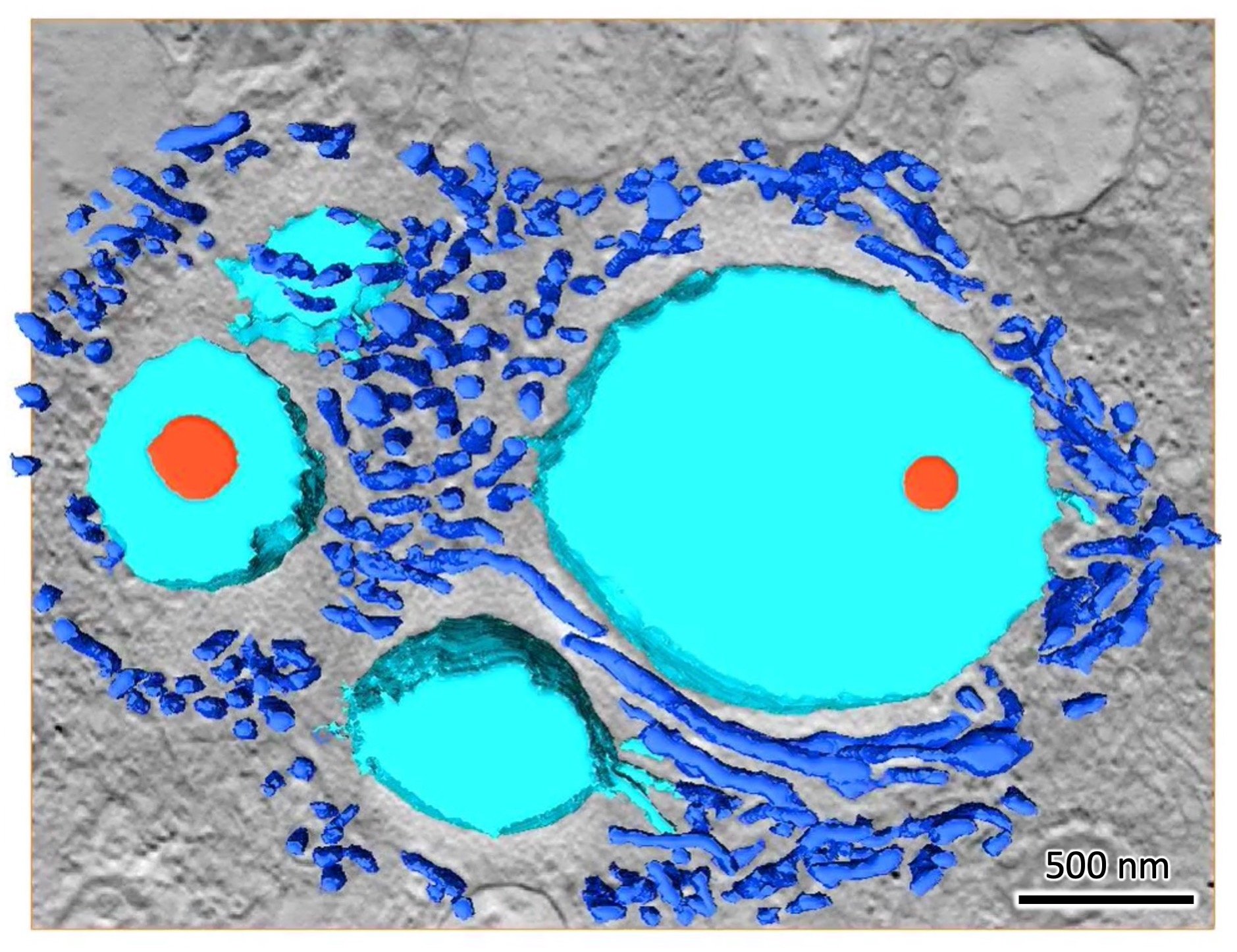The giant virus "cotonvirus" found in Japan is a new strain in the genus Mimivirus, and uses Golgi-shaped vesicles for viral factory.
Since Mimivirus was first reported as a giant virus in 2003, viruses larger than small bacteria have been discovered around the world. These giant viruses possess a number of genes that only eukaryotes have, and there are taxonomic controversies such as "whether they are viruses or organisms?" or "what they have evolved from?".
A group of Professor Masaharu Takemura of Tokyo University of Science discovered a giant virus similar to mimivirus in water collected in fresh water near Tokyo, and found a fibrous substance that covers the virus. They named it "cotonvirus" because of its appearance. Genomic analysis revealed that the virus belongs to the genus Mimivirus, but its genome size of 1.47 Mb (with base) is much larger than that of normal Mimivirus (1.2 Mb). It was comparable to the Tupan virus (1.5Mb), which shows the largest genome size. Based on these facts, it became clear that the cotonvirus is an independent strain in the genus Mimivirus.
Mimivirus forms an organella, commonly called a viral factory, in the host amebic cells and propagates there. When observed with an electron microscope, it was found that the periphery was covered with a string-like substance such as the Golgi apparatus in the early stage of the viral factory of cotonvirus (Figure 1). In this joint research, the viral factory was analyzed three-dimensionally using a scanning transmission electron microscope tomography (STEM tomography). As a result, it was found that the cotonvirus viral factory takes in Golgi-shaped vesicles to form the factory. This is a phenomenon not seen in viral factory of other viruses, suggesting that it is a process of forming a viral factory specific to cotonvirus.
This result not only revealed the diversity of giant viruses, but also provided new insights into how giant viruses utilize and coexist with host cells. In the future, it is expected that it can be used as a new tool for modifying the inside of cells by applying such a phenomenon.

Figure 1. Early viral factory formed by cotonvirus in host amoeba
Collaborative Researcher
Masaharu Takemura (Tokyo Univ Science)Song Chihong, Kazuyoshi Murata (NIPS/ExCELLS/ SOKENDAI)
Funding
KAKENHI, NIPS Joint Research
Release Source
Title: Cotonvirus japonicus using Golgi apparatus of host cells for its virion factory phylogenetically links tailed tupanvirus and icosahedral mimivirusAuthors: Haruna Takahashi, Sho Fukaya, Chihong Song, Kazuyoshi Murata, Masaharu Takemura
Journal: Journal of Virology
Issue: 95(18): e0091921
Date: 25 August, 2021
URL: https://doi.org/10.1128/JVI.00919-21

